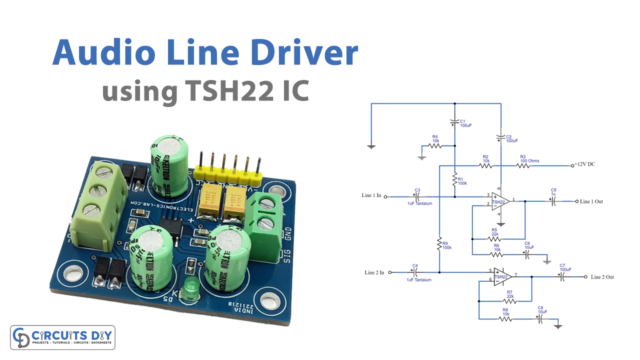Introduction
Many of us are huge fans of music. And, thus we know the instruments use to make music Almost all those instruments use amplifiers in them. Hence, Different audio equipment and instruments require various audio amplifiers. The guitar is among such instruments. Therefore, we will learn how to make a guitar audio preamplifier amplifier in this article. In other words, this tutorial is about making a “Guitar preamp circuit – overdrive using 12AU7”.
Preamplifiers, often known as preamps, are frequently used in conjunction with audio equipment to enhance sound in general. The circuit assists in preparing the main amplifier, which boosts the equipment’s power and audio quality, for receiving the electrical signal to do this.
In the making of the circuit, we are using a tiny medium-mu twin triode, the 12AU7. This tube is used in a variety of applications, including oscillators or multivibrators in industrial control systems, push-pull amplifier circuits, etc. The tube is fairly pokey, and parts may even be joined in parallel to build a power amp with enough current to power a guitar speaker or even a set of headphones.
Hardware Required
| S.no | Component | Value | Qty |
|---|---|---|---|
| 1. | Vacuum Tube | 12AU7 | 1 |
| 2. | Resistor | 1M, 220K, 470K, 1K, 100K | 1, 1, 1, 1, 1 |
| 3. | Capacitor | 0.01uF, 1uF, 0.047uF | 1, 1, 2 |
| 4. | LED | 2 | |
| 5. | Variable Resistor | 100K, 50K | 2, 1 |
| 6. | Battery | 9v | 1 |
Circuit Diagram

Working Explanation
When we play the guitar, the electric guitar sends a sound signal to J1 through a microphone or contact. Then, linking through a capacitor C1 to the grid pin of the 12AU7 vacuum tube V1/1, adjusting their input impedance with a resistor R1, and having VR1 operate as the cathode’s resistance to control the bias current of the vacuum tube V1. As we played the guitar, Operating VR1 adjusted the sound as the bias and gain were varied.
Application Uses
- Portable guitar amplifier circuits
- Speech amplification
- Power amplifiers













